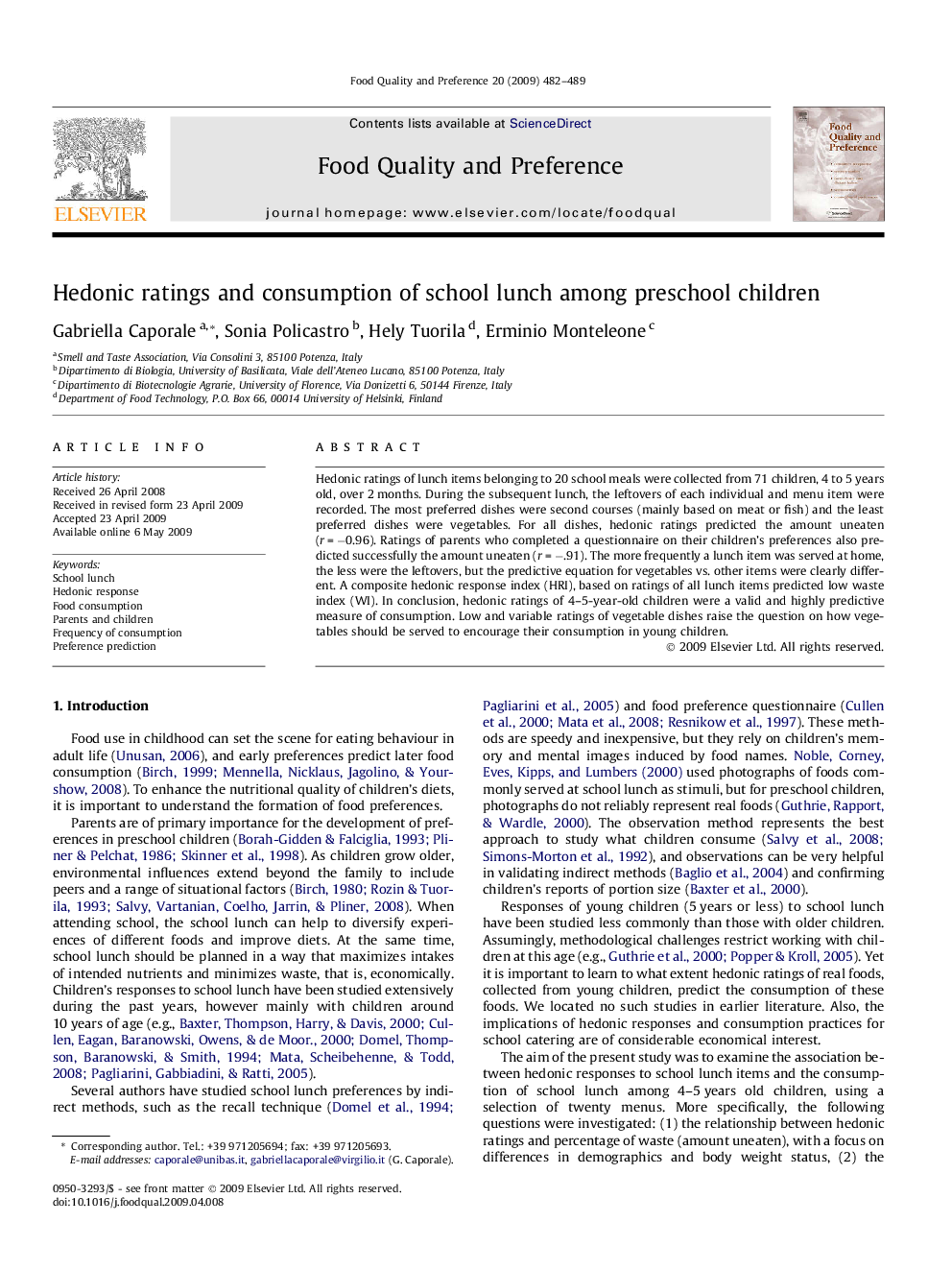| Article ID | Journal | Published Year | Pages | File Type |
|---|---|---|---|---|
| 4317900 | Food Quality and Preference | 2009 | 8 Pages |
Hedonic ratings of lunch items belonging to 20 school meals were collected from 71 children, 4 to 5 years old, over 2 months. During the subsequent lunch, the leftovers of each individual and menu item were recorded. The most preferred dishes were second courses (mainly based on meat or fish) and the least preferred dishes were vegetables. For all dishes, hedonic ratings predicted the amount uneaten (r = −0.96). Ratings of parents who completed a questionnaire on their children’s preferences also predicted successfully the amount uneaten (r = −.91). The more frequently a lunch item was served at home, the less were the leftovers, but the predictive equation for vegetables vs. other items were clearly different. A composite hedonic response index (HRI), based on ratings of all lunch items predicted low waste index (WI). In conclusion, hedonic ratings of 4–5-year-old children were a valid and highly predictive measure of consumption. Low and variable ratings of vegetable dishes raise the question on how vegetables should be served to encourage their consumption in young children.
